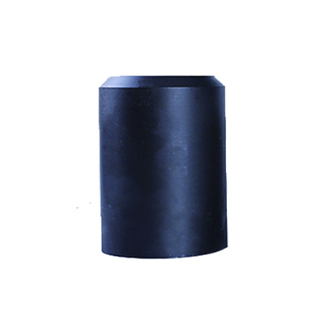- Afrikaans
- Albanian
- Amharic
- Arabic
- Armenian
- Azerbaijani
- Basque
- Belarusian
- Bengali
- Bosnian
- Bulgarian
- Catalan
- Cebuano
- Corsican
- Croatian
- Czech
- Danish
- Dutch
- English
- Esperanto
- Estonian
- Finnish
- French
- Frisian
- Galician
- Georgian
- German
- Greek
- Gujarati
- Haitian Creole
- hausa
- hawaiian
- Hebrew
- Hindi
- Miao
- Hungarian
- Icelandic
- igbo
- Indonesian
- irish
- Italian
- Japanese
- Javanese
- Kannada
- kazakh
- Khmer
- Rwandese
- Korean
- Kurdish
- Kyrgyz
- Lao
- Latin
- Latvian
- Lithuanian
- Luxembourgish
- Macedonian
- Malgashi
- Malay
- Malayalam
- Maltese
- Maori
- Marathi
- Mongolian
- Myanmar
- Nepali
- Norwegian
- Norwegian
- Occitan
- Pashto
- Persian
- Polish
- Portuguese
- Punjabi
- Romanian
- Russian
- Samoan
- Scottish Gaelic
- Serbian
- Sesotho
- Shona
- Sindhi
- Sinhala
- Slovak
- Slovenian
- Somali
- Spanish
- Sundanese
- Swahili
- Swedish
- Tagalog
- Tajik
- Tamil
- Tatar
- Telugu
- Thai
- Turkish
- Turkmen
- Ukrainian
- Urdu
- Uighur
- Uzbek
- Vietnamese
- Welsh
- Bantu
- Yiddish
- Yoruba
- Zulu
មករា . 24, 2025 04:49
Back to list
Casing Pup Joint
In the realm of oil and gas drilling, understanding each component's functionality is crucial for the seamless operation of equipment and ultimately, the project's success. One such critical component often misunderstood yet vitally important is the pup joint. While the term might sound informal, a pup joint serves numerous sophisticated purposes within the industry, translating to concrete benefits in extraction efficiency and equipment maintenance.
Authoritativeness is garnered by understanding the reliable manufacturers who adhere strictly to the standards set by the American Petroleum Institute (API). API 5CT and API 5DP are two standards that regulate the quality of pup joints, ensuring their integrity and suitability in high-pressure and high-stress environments. Knowing that a pup joint is manufactured to these stringent standards assures engineers and investors alike that the joint can withstand the demanding conditions it will address. Trustworthiness in the world of oil and gas revolves around the successful deployment and continuous performance of tools and components such as pup joints. Their successful usage is documented in various technical reports and case studies demonstrating enhanced well integrity, efficient depth adjustments, and robust connectivity between drill pipes. Being aware of credible case studies gives industry professionals the confidence to execute large-scale projects trusting fully in the dependability of their equipment. The world of pup joints is as intricate as it is essential. Future-facing companies continuously seek to innovate on the functions of pup joints, looking for lighter yet stronger materials such as advanced alloys and composites that offer improved durability and performance. Staying ahead through innovation has become a norm in the bid to surpass not just the prevailing industry standards but to align with environmental and operational adjustments necessitated by the evolving energy landscape. Finally, pup joints are more than just mere components; they are strategic enablers within the oil and gas sectors. They integrate engineering precision with practical application, securing a pivotal role in operational outcomes. As global energy needs grow and drilling conditions become more challenging, the role of pup joints becomes increasingly pivotal. Therefore, integrating their use into broader drilling strategies spells success for operations that wish to stay ahead in efficiency, safety, and profitability.


Authoritativeness is garnered by understanding the reliable manufacturers who adhere strictly to the standards set by the American Petroleum Institute (API). API 5CT and API 5DP are two standards that regulate the quality of pup joints, ensuring their integrity and suitability in high-pressure and high-stress environments. Knowing that a pup joint is manufactured to these stringent standards assures engineers and investors alike that the joint can withstand the demanding conditions it will address. Trustworthiness in the world of oil and gas revolves around the successful deployment and continuous performance of tools and components such as pup joints. Their successful usage is documented in various technical reports and case studies demonstrating enhanced well integrity, efficient depth adjustments, and robust connectivity between drill pipes. Being aware of credible case studies gives industry professionals the confidence to execute large-scale projects trusting fully in the dependability of their equipment. The world of pup joints is as intricate as it is essential. Future-facing companies continuously seek to innovate on the functions of pup joints, looking for lighter yet stronger materials such as advanced alloys and composites that offer improved durability and performance. Staying ahead through innovation has become a norm in the bid to surpass not just the prevailing industry standards but to align with environmental and operational adjustments necessitated by the evolving energy landscape. Finally, pup joints are more than just mere components; they are strategic enablers within the oil and gas sectors. They integrate engineering precision with practical application, securing a pivotal role in operational outcomes. As global energy needs grow and drilling conditions become more challenging, the role of pup joints becomes increasingly pivotal. Therefore, integrating their use into broader drilling strategies spells success for operations that wish to stay ahead in efficiency, safety, and profitability.
Next:
Latest news
-
Tubing Pup Joints: Essential Components for Oil and Gas OperationsNewsJul.10,2025
-
Pup Joints: Essential Components for Reliable Drilling OperationsNewsJul.10,2025
-
Pipe Couplings: Connecting Your World EfficientlyNewsJul.10,2025
-
Mastering Oilfield Operations with Quality Tubing and CasingNewsJul.10,2025
-
High-Quality Casing Couplings for Every NeedNewsJul.10,2025
-
Boost Your Drilling Efficiency with Premium Crossover Tools & Seating NipplesNewsJul.10,2025
Related Products







